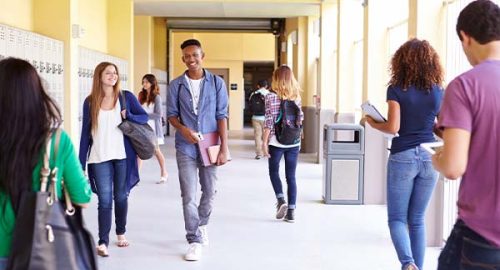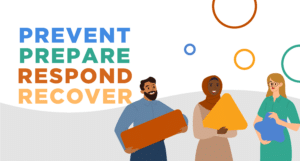“I was sitting in my office getting ready to go on lunch duty…My secretary runs in and says, ‘Frank, there’s been a report of gunfire.’”
As the principal of Columbine High School during the 1999 mass shooting, Frank DeAngelis quickly jumped into action. “I ran out of my office and my nightmare became a reality because the gunman was running towards me,” he recalls. “I was in disbelief and everything seemed slowed down.”
In a recent Raptor webinar, Mr. DeAngelis discussed some of the lessons learned throughout that day and the recovery process. These lessons learned can help prepare for the possibility of other school shootings and other hardships such as those caused by the COVID-19 pandemic.
A summary of our conversation is below. Watch the on-demand webinar here for the full conversation.
- Insights into Recovery
Speaking directly to the webinar audience, Mr. DeAngelis says, “You’re being pulled in so many directions—whether that be as parents, educators, law enforcement…whatever role you play—but the thing I learned early on is if you don’t take care of yourself, you won’t be able to take care of others.”
Mental health is a core part of recovery and school safety. This is true for localized incidents to violent worst-case scenarios like Columbine to even the pandemic.
COVID-19 has altered lives across the country, and how one person has coped may be completely different than the person standing next to them. “Everyone else seems to be making decisions for us,” Mr. DeAngelis points out. “The last thing we want is to have someone tell us what to do.”
It’s all about how we frame the message and speak about mental health. Instead of telling someone they must be suffering, Mr. DeAngelis recommends leaders show their vulnerability. This helps people recognize that they are not alone in their struggles. It’s also important that leaders take care of themselves, which is something, he says, “looks different for everyone.”
- Building a Focus on Safety
After the Columbine shooting, Mr. DeAngelis remembers how people from across the country came together. “There was so much support,” he recalls. “What worries me today… the enemy (the pandemic) is dividing us.”
Mr. DeAngelis reminds us, as we see people acting irate on TV and on social media, that kids are watching. “Our kids are going to model that behavior and that’s a major concern I have right now in our society and in our school communities.”
This all goes back to being role models and placing our differences aside so that we can come together for the common good of our schools. “That’s the important thing moving forward. How do you create an inclusive, welcoming environment while keeping it safe?”
- Revisiting School Safety Plans
During his tenure as principal, Mr. DeAngelis invited students, guardians, and other stakeholders into his office to discuss school safety. He would ask them, “What would you do if you were principal and why?” It’s important to involve people from various backgrounds and roles, as this gives school leaders better insight based on different perspectives.
The pandemic also taught schools a valuable lesson about communication. “You have to be careful with what you communicate because you start losing credibility,” Mr. DeAngelis says, recalling how schools would announce protocols only to rescind them days or weeks later when health officials or other entities announced regulations. These situations typically ended with irate students, staff, or guardians.
One thing that helped Mr. DeAngelis as principal was his relationship with the local police department. If they knew about an upcoming announcement that could result in angry students, staff, or guardians, they would warn Mr. DeAngelis. These warnings—although they couldn’t share specific details other than when the announcement would happen—allowed him to place additional support in his school.
He also recommends that schools involve organizations, like public safety and other experts, in school site assessments and when updating emergency operations plans (EOPs). There are many things, he says, schools may not consider on their own. For example, a principal may not notice how the trees on campus are a perfect hiding spot for a violent attacker, whereas a K-12 safety expert may notice that as a threat immediately once on campus. It’s also important that schools have policies for all roles, including substitute teachers, so that everyone knows how to confidently respond to emergencies.
Creating a Safe School
“The thing that you can’t underestimate,” Mr. DeAngelis says, “is creating an inclusive environment where all kids feel welcome, and every student has an adult to turn to.”
A safe school requires having a robust emergency management approach built specifically for your school and everyone inside of it. To learn how to accomplish this, download Raptor’s Guide to K-12 Emergency Management: Proven Strategies to Protect Your School.





